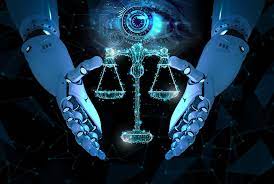On December 31, 2023, Chief Justice John G. Roberts, Jr. of the United States issued a cautionary statement regarding the use of artificial intelligence (AI) in the legal realm, underscoring the importance of exercising caution and humility. This warning was prompted by a notable incident where an AI application led legal professionals to submit briefs containing citations to non-existent cases, shedding light on the potential risks of excessive reliance on AI. Legal scholars have expressed apprehensions about the compromise of legal privileges when confidential information is input into AI tools. In criminal cases, the deployment of AI for assessing flight risk, recidivism, and other predictive decisions has raised concerns related to due process, reliability, and bias.
Despite a persistent public perception of a “human-AI fairness gap,” Chief Justice Roberts anticipates the continued relevance of human judges, while acknowledging the transformative impact of AI on judicial work, particularly at the trial level. These changes extend beyond the procedural aspects of adjudication to reshape judges’ understanding of AI’s role in the cases they handle.
In a pivotal legal case fueling the nationwide debate on privacy, surveillance, and government AI limits, United States v. Anand brings attention to the use of AI algorithms for targeting and interrogating chronic pain patients and individuals with substance use disorders. Dr. Neil Anand, a medical professional, becomes a central figure in this legal battle, raising critical questions about the erosion of medical privacy in the United States and its potential repercussions for future legal cases.
Moreover, the intersection of AI and law has taken a futuristic turn reminiscent of Philip K. Dick’s “Minority Report.” The utilization of AI for pre-crime methodology, akin to the dystopian narrative in the book, poses considerable dangers. The United States Department of Justice (DOJ) and the Department of Health and Human Services (HHS) have amplified efforts against healthcare fraud through cutting-edge technologies, including Generative Artificial Intelligence (AI) and Machine Learning. These advancements, while successful in identifying instances of fraud, have inadvertently targeted innocent healthcare providers and practices. This has ignited a national dialogue on striking the delicate balance between preventing crime and upholding civil liberties, reminiscent of the ethical dilemmas explored in “Minority Report.”

